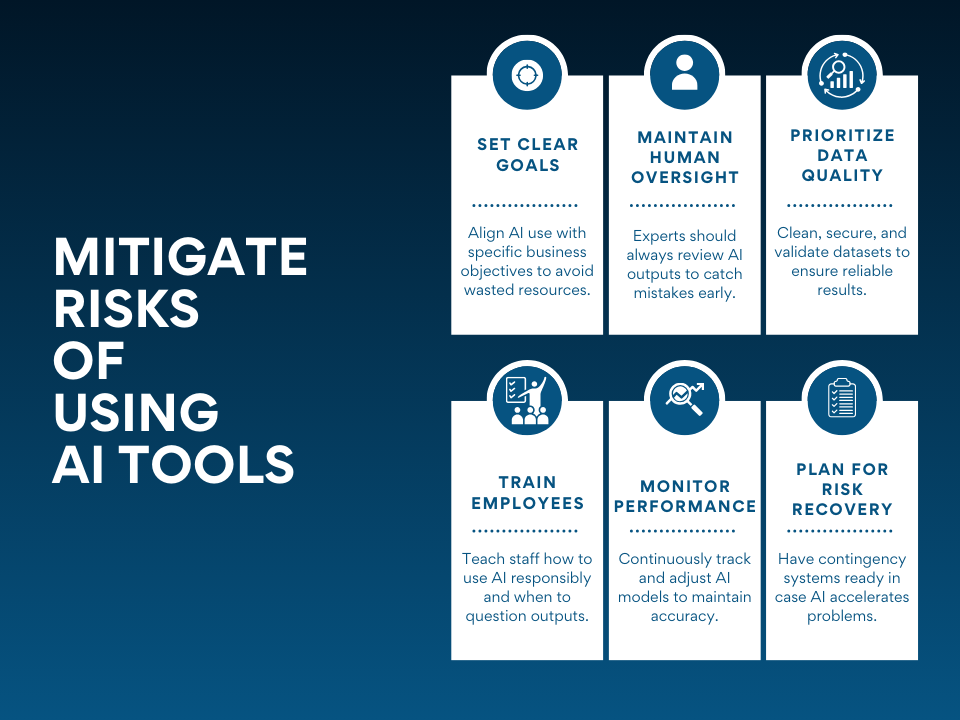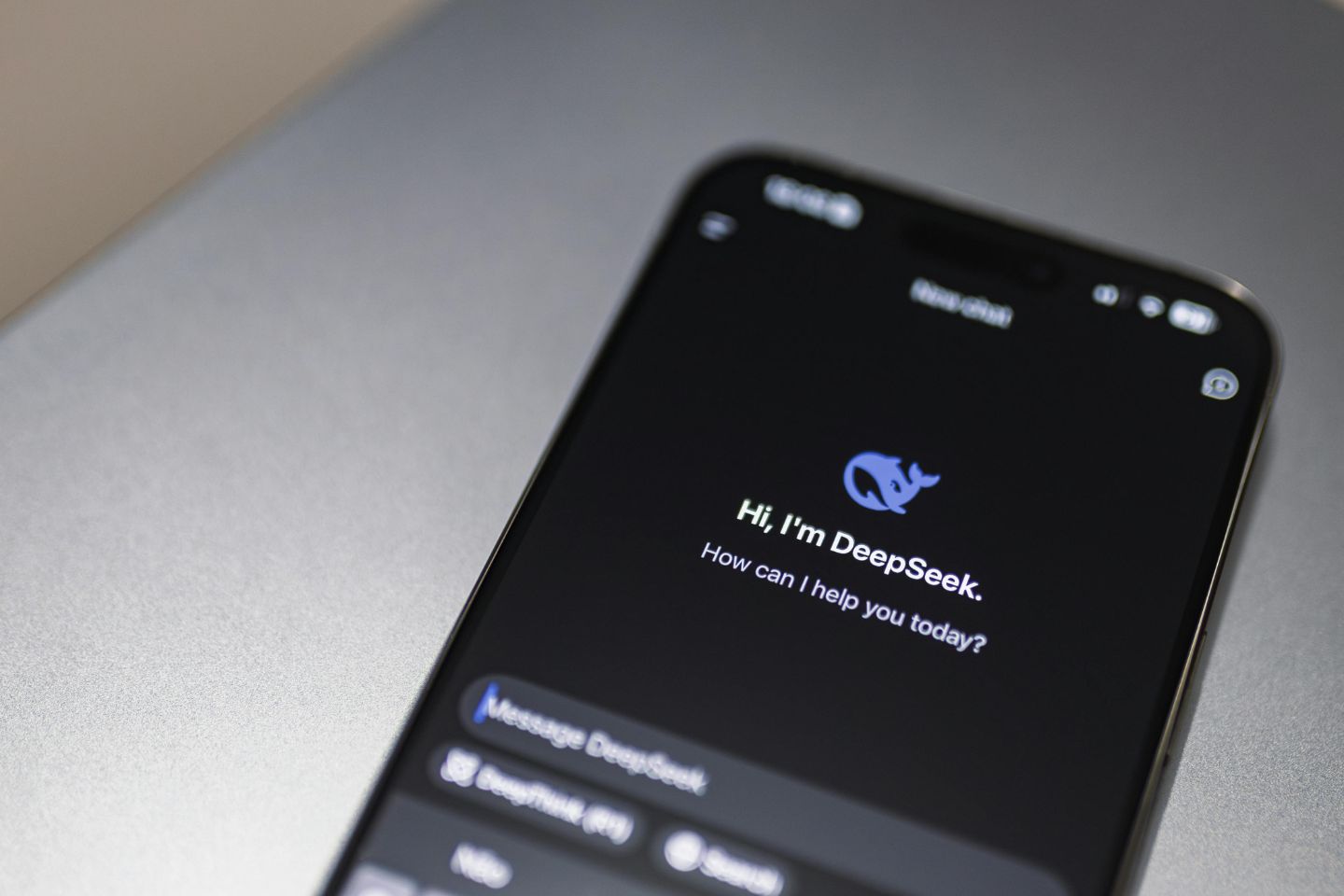Artificial intelligence (AI) has moved quickly from being a buzzword to becoming a central part of how businesses operate. From automating customer interactions, to generating data-driven insights, AI offers exciting possibilities for organizations looking to innovate and stay ahead of competitors. Yet as promising as these tools may seem, they also introduce new challenges that cannot be ignored.
Developing an AI app is not simply about embedding algorithms into software. It requires a careful balance between technical execution and business strategy, as well as a clear understanding of the risks that come with adopting advanced technology. While AI can accelerate processes and improve decision-making, it also has limitations that mean human expertise are indispensable.
This article explores what it takes to develop an AI app, the risks businesses face when integrating AI, and how to ensure the benefits outweigh the potential pitfalls.
Can AI Develop an App?
The question of whether AI can develop apps is becoming increasingly common as businesses explore ways to cut costs and speed up development. The short answer is that AI can assist in app development, but it cannot develop a fully functional app on its own. Today’s AI tools can generate snippets of code, suggest design improvements, automate testing, and even help identify bugs. This makes AI a powerful support system for developers, increasing efficiency and reducing repetitive work.
However, building an app requires much more than just writing lines of code. It involves understanding user needs, creating seamless experiences, ensuring security, and integrating complex systems in a way that aligns with business goals. These elements demand human expertise and what we call data intimacy, the deep understanding of a system and its unique requirements that only comes from years of experience. Without this, AI can make critical mistakes that go unnoticed until they escalate into larger problems.
So while AI can accelerate the app development process, it should be viewed as a tool that complements human developers’ work rather than replacing them. The real value comes from combining AI’s speed with human insight and oversight.
AI Integration in Apps
AI can be integrated into apps in ways that transform both functionality and user experience. One of the most common uses is personalization, where AI analyzes user behavior to recommend products, services, or content tailored to individual preferences. This is already seen in apps like Netflix and Spotify, where recommendations keep users engaged.
AI also brings capabilities such as natural language processing for chatbots and virtual assistants, computer vision for image recognition and scanning, and predictive analytics for smarter business decision-making. In healthcare apps, for example, AI can help identify patterns in patient data, while in finance it can detect fraudulent activity in real time.
These integrations allow apps to become more intuitive and proactive, anticipating user needs and streamlining complex tasks. However, while AI enhances functionality, it still requires human oversight to ensure accuracy, security, and alignment with the overall business strategy.
How to Develop an AI App
Developing an AI app requires careful planning and a balance between technical execution and business goals. Many companies imagine AI as a plug-and-play solution, but in reality, the process is much more strategic. To create an app that delivers value, businesses need to think about both the underlying technology and the real-world problems they want to solve.
At AppIt, we approach AI app development as a partnership, where business expertise and technical knowledge come together to create results that last.
Here are the key steps to developing an AI app.
- Define the business problem: The first step is identifying the challenge or opportunity the app will address. AI should never be added for the sake of novelty. Instead, businesses must clarify where AI can provide measurable value, such as improving customer service, automating a manual process, or providing predictive insights.
- Collect and prepare data: AI systems are only as strong as the data they are trained on. This involves gathering relevant datasets, cleaning them, and ensuring accuracy. For many businesses, this step uncovers gaps in their current data collection strategies.
- Choose the right AI model: Depending on the problem, different models can be applied, such as natural language processing for chatbots, machine learning for predictive analytics, or computer vision for image recognition. This step is where technical expertise is critical, as selecting the wrong model can derail the project.
- Design the user experience: An AI app must still function like a traditional app in terms of usability. The AI capabilities should be seamlessly integrated so that users gain benefits without feeling overwhelmed or confused by the technology.
- Develop and test the app: With the design and model in place, developers begin coding the app. AI components are trained, tested, and integrated. Rigorous testing ensures the system can handle real-world scenarios and adapt to unexpected inputs.
- Deploy and monitor performance: Once launched, an AI app needs ongoing monitoring. Unlike traditional apps, AI models evolve over time and require continuous fine-tuning to maintain accuracy and reliability.
What Are the Risks of AI?
AI is transforming industries by offering new levels of automation and insight, but it also introduces significant risks that businesses cannot afford to overlook. These risks go beyond technical glitches and touch on areas such as operations, workforce management, ethics, and reputation. Understanding them is essential before deciding how and where AI should be integrated into a business.
Here are the key risks associated with AI.
- Lack of data intimacy: AI systems are not capable of developing the kind of expertise humans build over years of experience. While AI can process vast amounts of information, it cannot interpret subtle nuances the way a specialist can. This limitation means AI may generate solutions that look correct on the surface but fail in practice. Without experienced professionals reviewing results, mistakes can escalate quickly.
- AI inaccuracies: One of the most well-documented risks of AI is its tendency to provide inaccurate and sometimes entirely fabricated information. For businesses, relying on such outputs without verification can lead to costly decisions, misinformed strategies, and even reputational damage. The incident reported in The New York Times, where a user was misled into believing he discovered a new mathematical formula, is a clear example of how dangerous unchecked AI advice can be.
- Acceleration of problems: AI is an acceleration tool, which means it can scale solutions but also amplify errors. When a process is flawed and AI is introduced, the system can multiply the problem at a much faster rate. Without skilled oversight, businesses risk compounding issues instead of solving them.
- Workforce burnout: While AI often automates repetitive tasks, it can also shift employees into a constant cycle of high-intensity work. By removing low-intensity tasks that provide natural breaks, AI can inadvertently increase burnout rates. Burnout not only reduces productivity but also raises employee turnover when not monitored, assessed, and measured with the help of data and human risk intelligence. Higher employee turnover rates introduces further costs in hiring and onboarding.
- Security and privacy concerns: AI systems rely heavily on data, which raises concerns about security and compliance. If sensitive data is mishandled, exposed, or used to train models without proper safeguards, businesses face regulatory penalties, lawsuits, and damaged trust.
- Overdependence on automation: When companies rely too heavily on AI without maintaining internal expertise, they risk losing operational resilience. If the AI system fails or delivers flawed outputs, there may be no one with the necessary knowledge to correct the issue quickly.
What is Necessary to Mitigate Risks of Using AI Tools?
Mitigating the risks of using AI tools requires a proactive approach that balances innovation with responsibility. While AI has the potential to accelerate workflows and open new opportunities, businesses need to establish safeguards that protect against mistakes, security concerns, and overreliance on automation. The first step is creating a clear strategy for AI adoption. This means aligning the use of AI with specific business goals rather than introducing it as a trend-driven experiment. When businesses define what they want AI to achieve, they reduce the risk of wasted resources and poorly integrated tools.
Another critical step is maintaining human oversight at every stage. AI can generate insights, automate tasks, and support decision-making, but it lacks data intimacy and cannot replace years of human expertise. By ensuring that subject matter experts review AI outputs, businesses prevent small inaccuracies from becoming costly problems. This oversight also helps employees build trust in AI tools, which encourages responsible adoption across teams.
Data quality is another important factor. AI systems rely entirely on the data on which they are trained, so businesses must invest in cleaning, securing, and validating their datasets. Poor data can lead to flawed outputs, while unsecured data introduces compliance and privacy risks. Establishing clear policies for data governance helps create a stronger foundation for AI performance.
Employee training is equally important. Workers need to understand not only how to use AI tools but when to question them. By educating staff on AI’s strengths and limitations, businesses can prevent overdependence while fostering a culture of critical thinking. Training should include both technical guidance and scenario-based exercises that prepare employees to spot errors or biases in AI-generated outputs.
Continuous monitoring and evaluation also play a key role. Unlike traditional software, AI models evolve over time, which means they require regular updates and retraining to remain accurate. Businesses should set up systems that track performance, flag anomalies, and allow for swift adjustments when issues arise.
Finally, companies should plan for risk recovery. This involves building contingency strategies in case AI tools accelerate a problem rather than a solution. Having backup systems and processes ensures that the business can adapt quickly without significant downtime.
By combining strategic planning, human expertise, strong data governance, employee training, and ongoing monitoring, businesses can harness AI responsibly while minimizing risks. With these measures in place, AI becomes a tool for sustainable growth rather than a liability.

Do the Benefits of AI Outweigh the Risks?
When considering whether the benefits of AI outweigh the risks, the most important factor is not the technology itself but how it is applied within a business. AI offers tremendous potential to improve efficiency, provide predictive insights, and deliver more personalized customer experiences. It can analyze data at a speed and scale no human can match, automate repetitive tasks, and free up employees to focus on higher-value work. For many businesses, these benefits translate into cost savings, faster decision-making, and competitive advantage.
However, the risks cannot be ignored. Without proper oversight, AI can produce inaccurate results, accelerate problems, and even introduce new vulnerabilities. Businesses that overestimate AI’s capabilities or underestimate its limitations are the ones most likely to encounter setbacks. In these cases, the risks can outweigh the benefits, particularly if there is no strategy in place for managing errors or ensuring human expertise remains central to operations.
The balance shifts in favor of benefits when businesses approach AI as a tool to enhance human capability rather than replace it. When data is well managed, when employees are trained to work effectively with AI, and when oversight is prioritized, AI becomes a powerful accelerator. It allows organizations to unlock insights more quickly, scale solutions efficiently, and innovate in ways that would be difficult through manual processes alone.
Ultimately, AI is neither inherently good nor bad. Its value depends entirely on how it is implemented and managed within a business. With a clear strategy, strong governance, and skilled professionals guiding its use, the benefits can significantly outweigh the risks. On the other hand, without these safeguards, the risks can undermine progress and create long-term challenges.
At AppIt, we help businesses harness AI responsibly, ensuring that the technology is integrated in ways that align with real-world goals and protect against potential pitfalls. If you are considering integrating AI into your business or app, our team can guide you through every step of the process so you achieve the benefits without being blindsided by the risks.
Contact AppIt today to start building a smarter, more resilient AI-powered solution.








